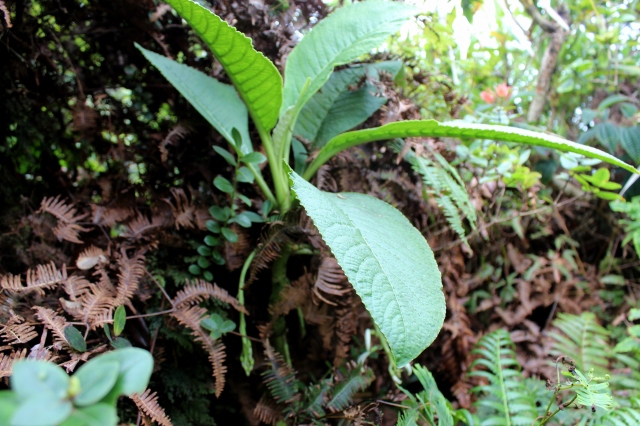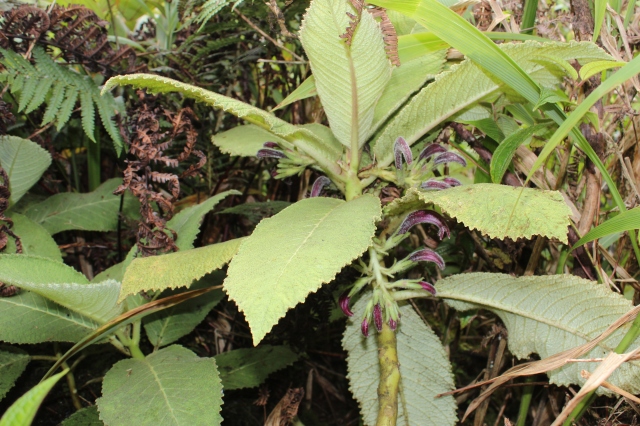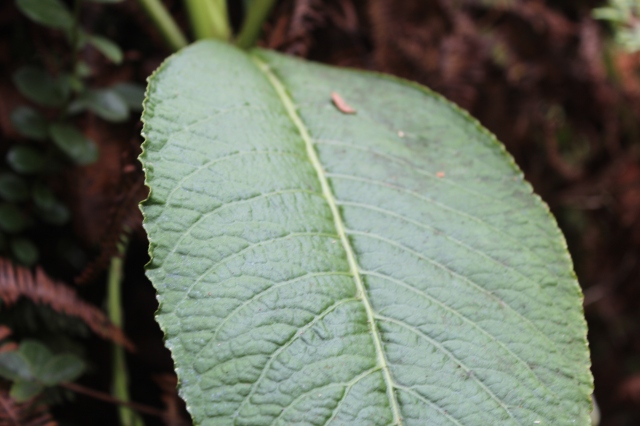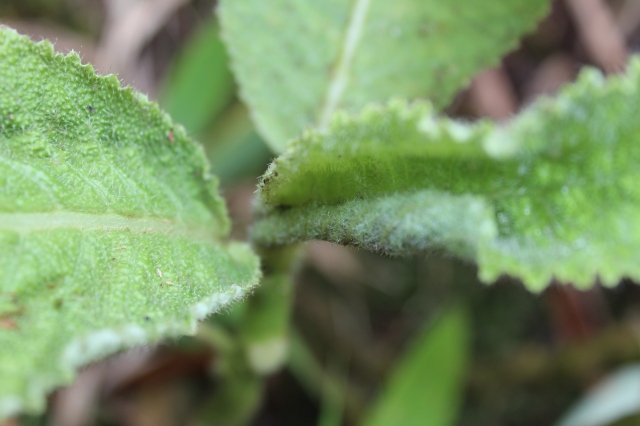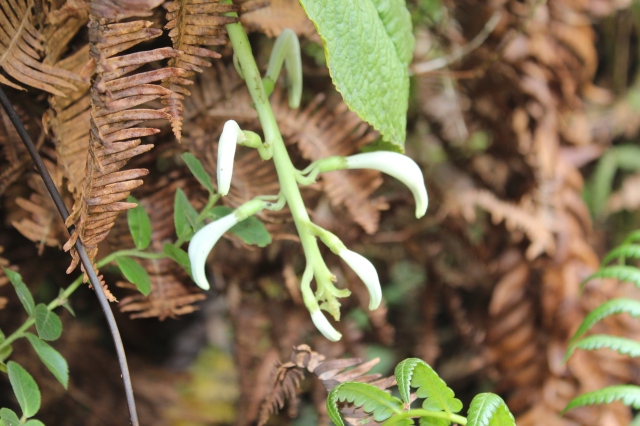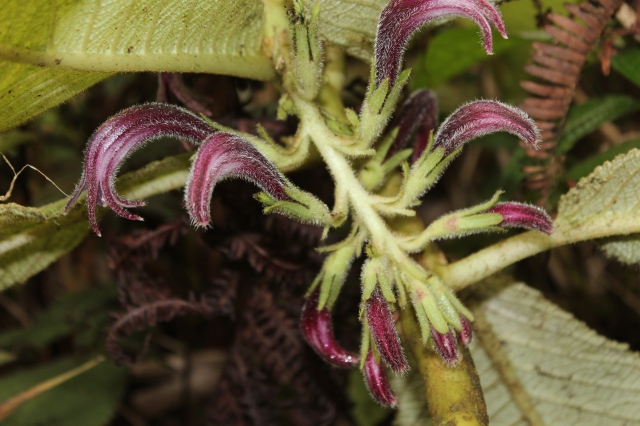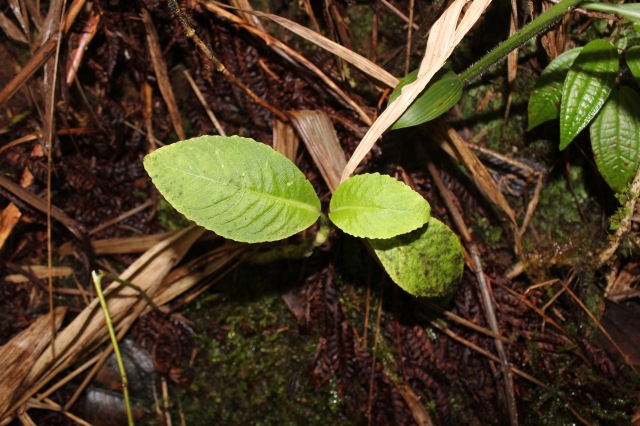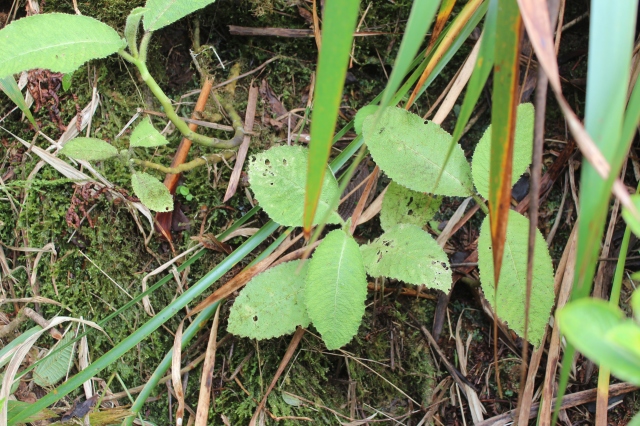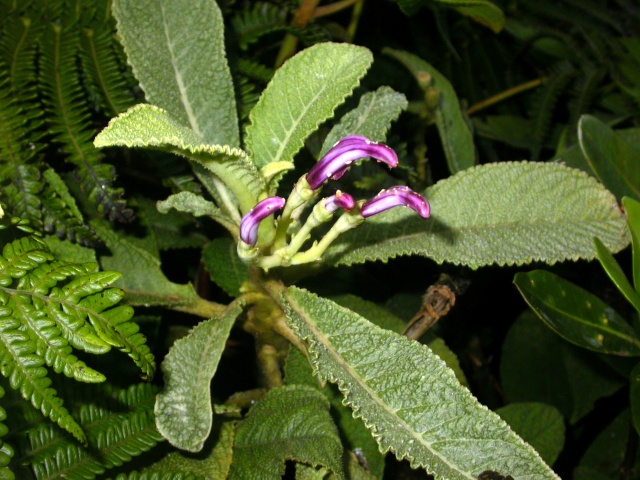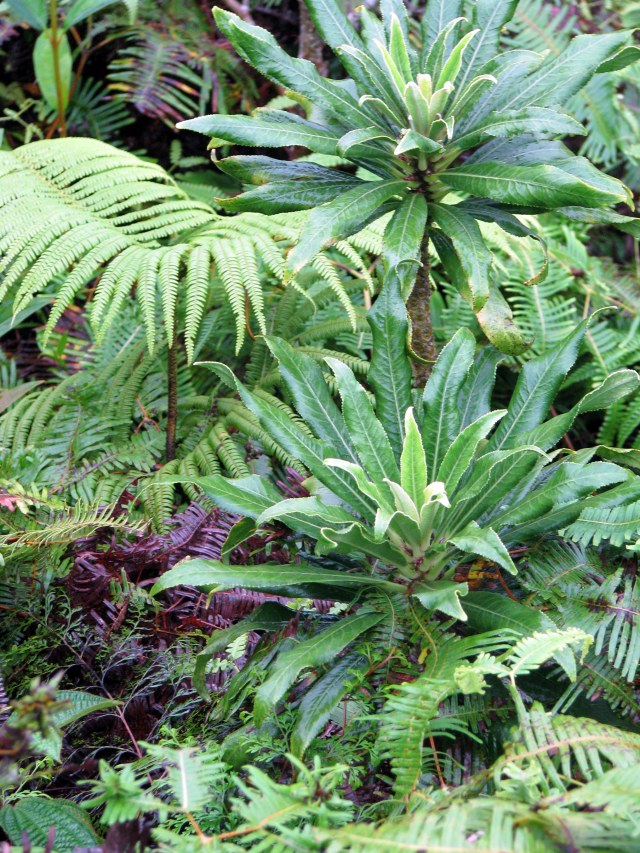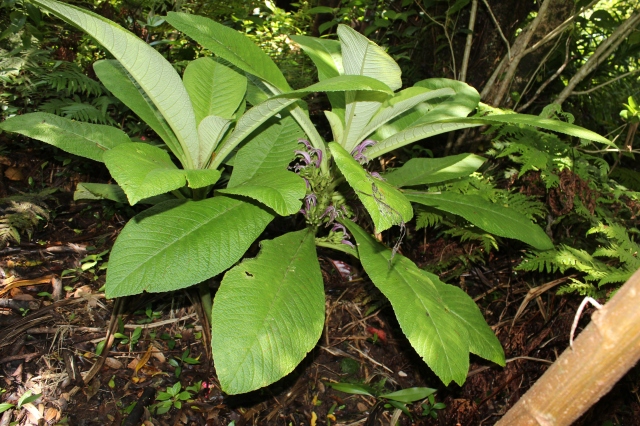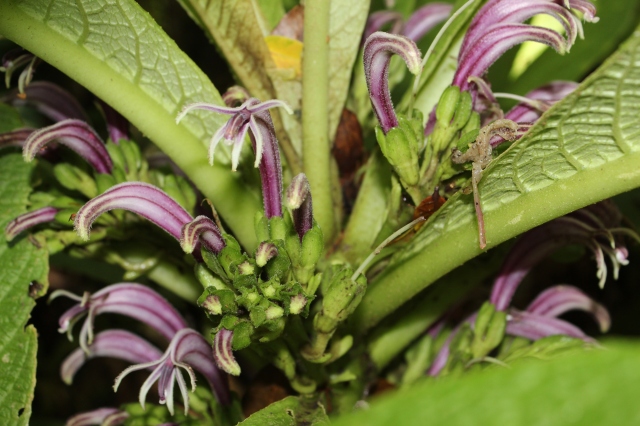So, this new species Cyanea konahuanuiensis (Haha mili’ohu), how does it look different from other Cyanea spp? There are actually a few species of Cyanea spp. that live in the same general area as haha mili’ohu. Let’s take a look. The top picture is Cyanea humboltdiana the bottom is said C. konahuanuiensis. Incidentally, these two are definitely sympatric, the 2 plants themselves are a few hundred feet from each other.
Again, top is C. humboldtiana, bottom is Haha mili’ohu. Notice how much more hairy the leaves of haha mili’ohu are compared to C. humboldtiana. As you can see above, both surfaces are quite hairy.
There is a lot going on here. Both species have long, pendulous infloresences, but again C. konahuanuiensis‘ entire floral structure is much hairier than C. humboldtiana. As for the flowers themselves, notice too how much larger the calyx (the triangular petals surrounding the colorful flower) are on haha mili’ohu than C. humboldtiana.
Even the keiki look different!
And there are more Cyanea spp, specifically in the Rollandia radiation, that live in the general area.
This Cyanea calycina is maybe a quarter mile away. The leaves and flowers are not as hairy, floral structure is shorter and less droopy, and calyx are chunkier.
This Cyanea koolauensis too is roughly a quarter mile away. Its leaves are much more glabrous and a lot skinnier.
And Cyanea crispa is found nearby too. Leaves can get much, much larger on C. crispa vs. C. konahuanuiensis. And again, the entire floral structure is very different.
So there we have it, a quick visual guide to some of the differences between Cyanea konahuanuiensis and the other closely related species that live nearby. Of course, a more exhaustive list is found in the paper. (Hint, hint, hint)

